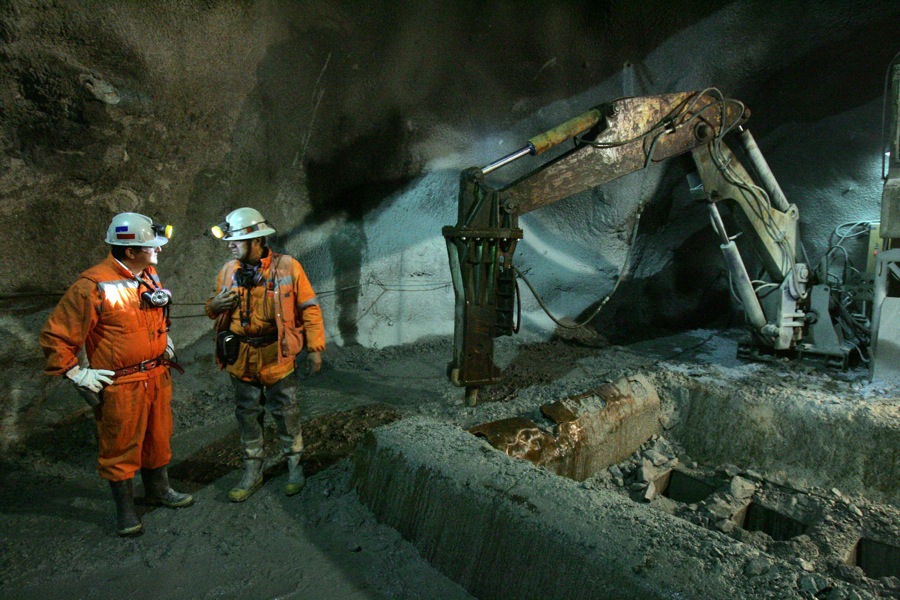Underground mining operations around the world pose similar
risks to worker safety and health. Though different techniques are used to
extract base metals, precious metals, non-metallic minerals, diamonds and coal,
the hazards do not differ that much. The deeper the mine, however, the greater
the risk...
Experienced miners know what gear they need to prevent or at least minimize injuries on the job. For newcomers, however, it’s important to include information on selecting PPE in their training. Manufacturers of PPE have made significant improvements in the materials they use. Take a look at what you’re using for PPE. It might be time for change.

Protective Clothing This may include rain gear, head gear, high-visibility jackets and coveralls, flash-rated, all-cotton coveralls and clothing with reflective stripes such as those worn by bikers and runners.
Fall Protection While
typically not a major issue in underground mines, working at different heights
is sometimes required in mountainous mines or raised goldmines where ladders
and scaffolds are needed. In these situations, make sure you have the proper harnesses,
belts and other safeguards to prevent falling.
Work Gloves Special tasks require specific gloves. Today’s glove manufacturers have made significant improvements in glove designs, using lighter-weight and more breathable fabrics. Some of these materials even offer better cut and puncture resistance. Take a look at the gloves your workers are using. There may be better options available.
Footwear Enhancements in footwear have made industrial footwear even better. Today’s work boots are higher to prevent ankle rollover. Specially insulated boots can protect feet in both extreme cold and heat. Sole platforms are now wider and thicker to provide surer footing and better balance.
Eye Protection In addition to LED-lighted hard hats, many miners require safety glasses. Today’s eyewear designs include improved scratch abrasion and fog resistance.
Hearing Protection Mine blasting and excessive noise generated by diesel-powered equipment can cause lasting damage to miners’ hearing. Hearing protection in the form of earplugs and coverings can be used, depending on the ambient decibel levels in work areas.
Work Gloves Special tasks require specific gloves. Today’s glove manufacturers have made significant improvements in glove designs, using lighter-weight and more breathable fabrics. Some of these materials even offer better cut and puncture resistance. Take a look at the gloves your workers are using. There may be better options available.
Footwear Enhancements in footwear have made industrial footwear even better. Today’s work boots are higher to prevent ankle rollover. Specially insulated boots can protect feet in both extreme cold and heat. Sole platforms are now wider and thicker to provide surer footing and better balance.
Eye Protection In addition to LED-lighted hard hats, many miners require safety glasses. Today’s eyewear designs include improved scratch abrasion and fog resistance.
Hearing Protection Mine blasting and excessive noise generated by diesel-powered equipment can cause lasting damage to miners’ hearing. Hearing protection in the form of earplugs and coverings can be used, depending on the ambient decibel levels in work areas.
Employers need to provide the right PPE to every employee to
protect the life, health and safety of the workforce, as well as to protect
valuable worksites and assets. As leading mining organizations already know,
creating a safe working environment means a more productive and profitable
mining operation.
Looking for affordable PPE - contact L&A Safety and place your order today, or pop into one of the branches in Robertson, Vredenburg or Cape Town!
